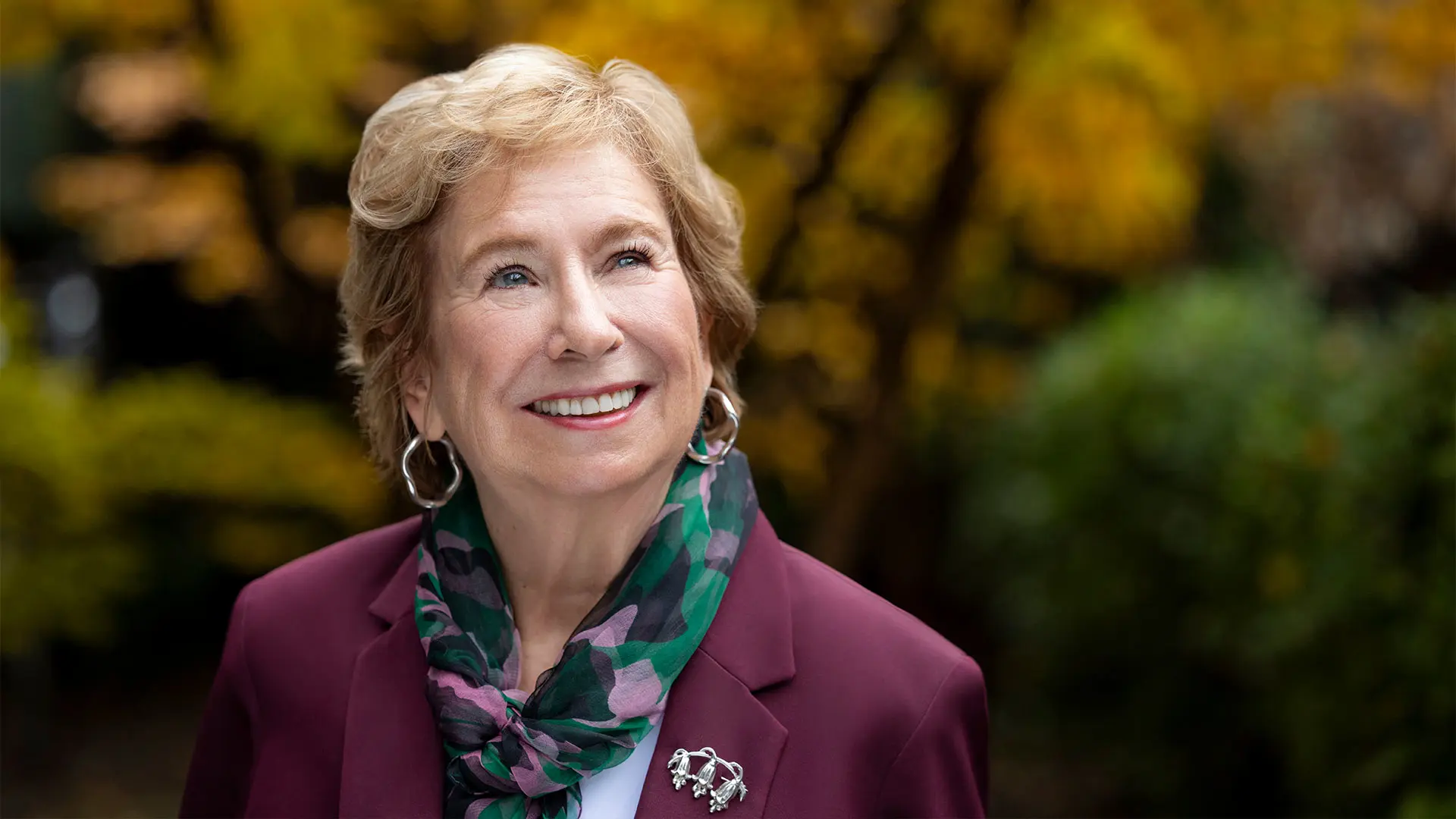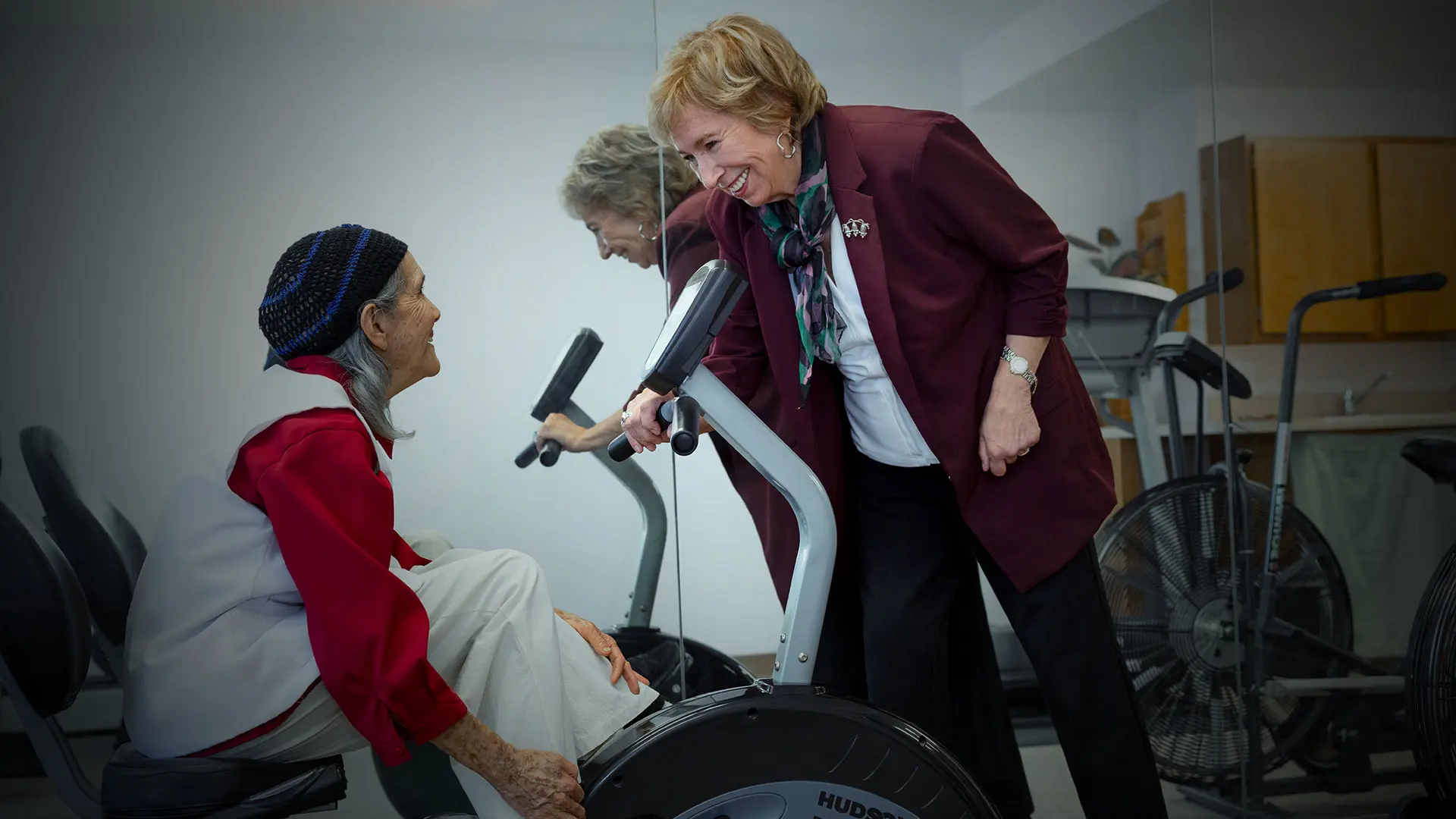After 42 years at Mount Sinai and at the James J. Peters Veterans Administration Medical Center—where she broke ground in fields ranging from team-based training and education to underserved community improvement to rural health delivery and curriculum development—Judith Howe, PhD, MA, MPA, is transitioning to the next phase of her distinguished career.
Dr. Howe will become Professor Emerita at the Brookdale Department of Geriatrics and Palliative Medicine at the Icahn School of Medicine at Mount Sinai in addition to serving as immediate past President and current Board Chair of the Gerontological Society of America (GSA), the nation’s largest interdisciplinary organization devoted to the field of aging. In addition to continuing to contribute to the lives of the underserved, Dr. Howe also looks forward to improving her oil and watercolor painting and crossing the Drake Passage, the body of water between South America’s Cape Horn and Antarctica, considered one of the most treacherous voyages for ships to make.
In addition to her roles as Professor of Geriatrics and Palliative Medicine at the Icahn School of Medicine at Mount Sinai and Associate Director of Education and Evaluation at the VA’s Geriatrics Research, Education and Clinical Center (GRECC) in the Bronx, Dr. Howe co-founded and serves as chair of Linkage House, an innovative housing model that integrates social and health services for lower income older people in East Harlem. She is also past editor-in-chief of Gerontology & Geriatrics Education and current editor of Cogent Gerontology.
“As I learned throughout my long career, there is no field in health care or social services more rewarding, exciting, or challenging than gerontology,” says Dr. Howe, who over the course of her career has had a hand in helping to establish and develop the Brookdale Department as a leader in the field.

"As I learned throughout my long career, there is no field in medicine or social services more rewarding, exciting, or challenging, than gerontology," says Judith Howe, PhD, MA, MPA.
In this Q&A, Dr. Howe discusses her many accomplishments and challenges in a field that is changing rapidly.
In the course of your career involving government, gerontology, and health policy, what gave you the greatest satisfaction?
Both my parents were committed to social change and equity, and I was exposed to many cultures and people as we moved across the United States. Thanks to this upbringing, I’ve always been committed to a life of service and taking on new challenges. One aspect of my career that I found particularly gratifying is my community-based work in East Harlem. There, I was part of a team that conceptualized, obtained federal funding for, and broke ground in 1997 for Linkage House. That was a rewarding experience because it allowed me to use the knowledge and experience I gained in establishing the Brookdale Department and from others on our team to build, from the ground up, an integrated model that connects older residents with affordable housing and a range of services that enhances their wellness and quality of life.
I’m also proud that I was an early participant in the movement for interdisciplinary team-based health care. I was Principal Investigator for 10 years of a national consortium of geriatric education centers based at Mount Sinai involving team-based education. Before that, I was the Co-PI for The John A. Hartford Foundation-funded Geriatrics Interdisciplinary Team Training Program within the Brookdale Department. I also initiated an interprofessional palliative care fellowship with my colleagues at the VA that was quite novel more than two decades ago. All of this morphed into the program known as Rural Interdisciplinary Team Training or RITT. Created in 2011, RITT is a workforce development program to enhance the geriatrics knowledge and skills of VA primary care clinicians and staff caring for older veterans in rural communities across the country. In other words, places where health care services are few and far between. With experts from the Brookdale Department and the Bronx VA, we trained more than 2,000 health care providers and staff through in-person workshops before pivoting to a virtual format during the pandemic.
What are some of the biggest changes you’ve seen during your years at Mount Sinai and the VA in the care of older adults?
One major change is a much greater focus on the importance of ageism in how we look upon and respond to the process of aging. Dr. [Robert N.] Butler, who recruited me in 1982 to become the first administrative director of the Brookdale Department, where he was the founding Chair, coined the word “ageism.” Our nascent department has grown into the leading institution for expert clinical care, education and training, and evidence-based research in both geriatrics and palliative care.
Moreover, in recent years, GSA has led the National Center to Reframe Aging, a national initiative that addresses, through research-based communications strategies, the implicit bias and harmful stereotyping of people as they age. The implications of this program are profound for the health care field, and how we as clinicians and professionals communicate to our patients and to the public about aging.
Certainly, one of the biggest movements in our field in more recent years has been the shift from hospital to home-based interventions for older adults. Mount Sinai has been at the forefront of providing quality, hospital-level care to people within the home setting by addressing all the social, economic, and environmental issues that are important to their health. And in terms of broad changes, none has been more critical in allowing that transformation to take place than telehealth, which the Bronx VA GRECC rolled out well before the pandemic made it popular. We learned a lot about its use as an effective tool for allowing a patient to have a consultation with a geriatrician, or for a primary care physician to seek expert advice from a geriatrician about a case. The GRECC’s experience with telehealth helped to shape RITT and another remote program, GRECC Connect.
The field of gerontology has faced no shortage of challenges during the last few decades. Which has caused you the greatest concern?
There is probably no greater concern for me, and for the field in general, than the insufficient number of health professionals to care for a rapidly growing population of older adults. There are a little more than 7,000 board-certified geriatricians in the United States out of a total workforce of 1.1 million medical providers. For other health care professions, there is also a critical shortage. For instance, just 4 percent of social workers and less than 1 percent of pharmacists are credentialed in geriatrics. No less worrisome is the fact that student enrollment in gerontology courses is shrinking, with some schools having closed their doctoral, master’s, undergraduate, and certificate programs. GRECCs throughout the VA Health System, led by my colleague Dr. Josea Kramer, met this challenge head-on by creating the Geriatric Scholars Program. This program expands knowledge and competencies to rural providers and staff through various learning activities. The program enabled us to successfully introduce geriatrics competencies to primary care providers, allied health professionals, and ancillary staff in the VA’s rural outpatient clinics, where the patients they treat are typically older and in poorer health than their urban counterparts. Within the Brookdale Department, innovators, such as Dr. Helen Fernandez, are creating solutions to bring the core principles of our work into the genome of American medicine. We are reaching medical students earlier in their careers, offering fellows more resources to support their education, and identifying ways to reach clinicians remotely (such as through POGOe and CAPC).
How do you see our role and responsibilities evolving in the coming years at the Brookdale Department, and the field in general?
During my years at Mount Sinai, I’ve seen greater embracing of the social and spiritual aspects of caring for older patients, including chaplaincy and social work. I believe that trend will grow as we expand our activities into palliative care, and as we look increasingly for creative and effective ways to serve a population whose main goal is the highest quality of life within the home and community. I also think that clinicians and other providers in geriatrics will continue to benefit from the fundamental changes we helped launch in interdisciplinary training and education and from team-based practice. For patients, families, and caregivers, these changes translate into an integrated plan for their care and choices, based on input from multiple fields of health care, but most importantly, the patient.
What advice would you give to a new generation of young people considering the field of geriatric and palliative medicine?
There’s no question they’ll face considerable headwinds, especially from competing fields of medicine that offer better reimbursement. But my advice to them is to keep an open mind and consider the many avenues within gerontology they’re probably unaware of—areas that don’t necessarily lead to clinical practice or teaching at a university or college doctorate or undergraduate program. They could become, for example, a director of an agency focused on issues of aging, or head of a senior center within the community. There are plenty of other opportunities as a social worker, nutritionist, physical therapy specialist, or in other allied health professions. As I learned throughout my long career, there is no field in medicine or social services more rewarding, exciting, or challenging, than gerontology.
